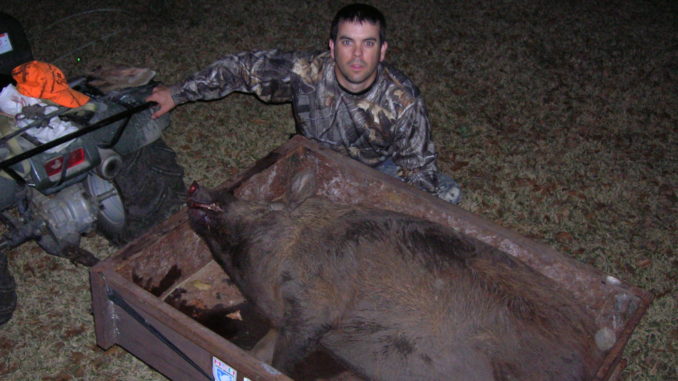
January is prime time to thin out wild hogs
The weather may seem very similar to December, but January is definitely a transitional month for outdoorsman around the Carolinas — especially the thousands of deer hunters out there. More hunters participate in deer season than all of the other game animals combined. But just because the season is over doesn’t mean the deer rifle should be retired to the gun cabinet. Hunters can continue hunting, targeting a different quarry with large white tusks in the front and a pair of country hams bringing up the rear.
Wild hogs, sometimes referred to as feral pigs, have been a part of the Carolinas ecosystem for well over a century. They were first introduced by European explorers to serve as a domestic food source, and the rich, fertile woodlands fit right into a habitat model where wild hogs could survive and thrive.
Yet hogs prefer certain habitats over others. Typically, they need immediate access to water. Hogs do not have sweat glands, and they must cool down during the summer in places with an ample supply of water. They have used the states’ extensive network of rivers and swamps to spread into just about every region.
Hogs are prolific breeders, capable of producing multiple litters per year. They are spreading all over the place and causing havoc to natural habitats used by native species. Since their numbers have increased so rapidly, the habitats they prefer in swamps and bottomlands are becoming pillaged and over-crowded, and that has forced groups of hogs to move into other places not typically populated by hogs. During the winter, when food is scarce, hogs will key on any available food source to sustain themselves.
Few natural food sources are available for wildlife in January, which makes hogs vulnerable to hunters with access to food plots and maintained feeding stations. In places where baiting for deer is legal, most hunters discontinue their feeding when the season ends, making the food scarcity even more noticeable. Any available food source remaining will concentrate wildlife in the area, and if hogs are among them, they will surely find that best food source, travelling a great distance when their preferred or natural food sources dry up.
Hunters can extend their big-game season in areas with bait piles, rich food plots or an abundant food source. But be warned, wild hogs are sensitive to hunting pressure, and they will go nocturnal very quickly when a stand site is over-hunted.
Hogs can bring excitement at the end of deer season, especially since there is no bag limit. Plus, they are very destructive to the environment and will compete with native game species for food, cover and water. Hogs will plow up the terrain looking for anything below the soil surface, too, causing major destruction to food plots, pine plantations and native forestland habitats. Hunters should attempt to take as many as possible when the possibility exists.




Be the first to comment